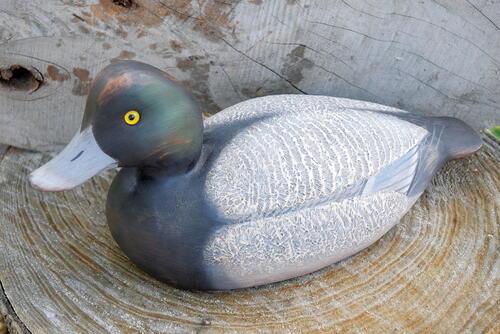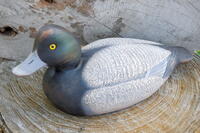1935 Ward Brothers Scaup
A hardworking decoy with a lot of history.

I never tire of making or studying Ward Brothers decoys! This scaup—or bluebill, broadbill, blackhead, whatever your name for the species is—was our subject in the annual Smoker Brothers Carving and Painting Seminar held every April in Ocean City, Maryland, and sponsored by the Ward Museum of Wildfowl Art. Our decoy was carved from white cedar. To achieve the textured surface, we used modeling paste and marble dust instead of the Wards’ white lead. We stippled the back and sides. Painting was accomplished using oils, but you can use acrylics instead. The bill on this bird was painted on, not carved.
It’s a transitional decoy, somewhere between the 1932 blackhead (which appeared in my book Counterfeiting the Counterfeiters) and the iconic 1936 model. After study and research, I would place it on the timeline at around 1935. What drew me to this decoy is its provenance. I know its original owner and his history using the decoy. I also know the location where it was rigged out—I can see the spot from my home on the Big Annemessex River. I also own the original decoy; it’s a treasured addition to my collection. For total authenticity, I carved my model in the famed Ward Brothers shop in Crisfield, Maryland.
Read NextA Hen Wood Duck Head



